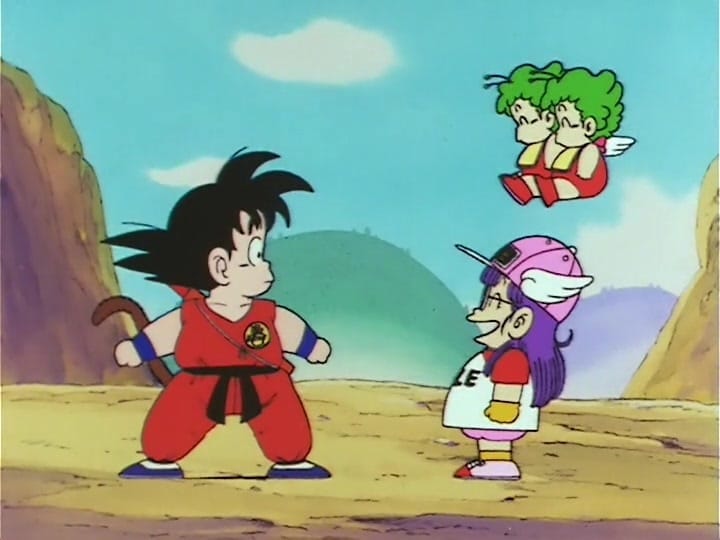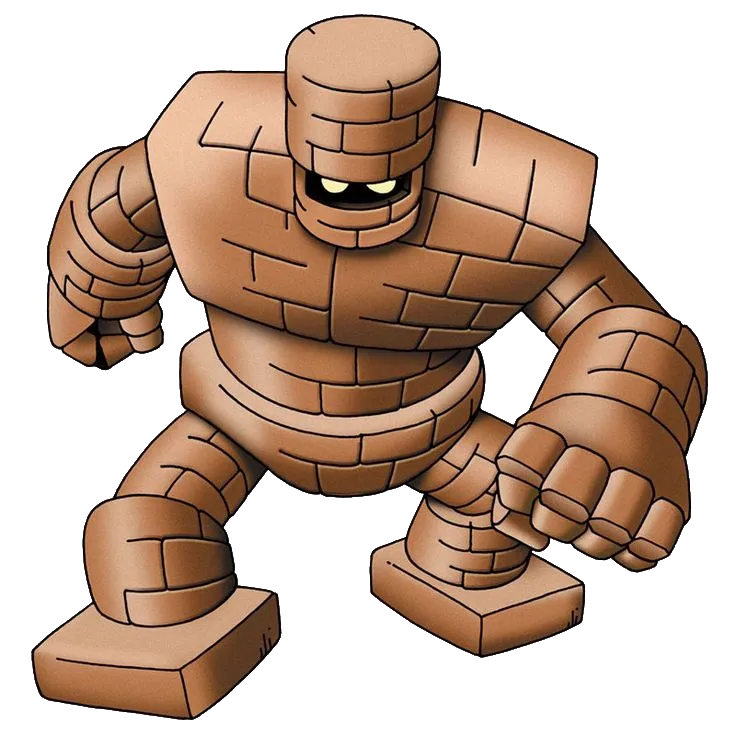Dragons and Drawings: Akira Toriyama and Dragon Quest
In honor of Akira Toriyama's passing, let's discuss one of his greatest works: the character and monster designs of the long-running Dragon Quest series.

Welcome to ANIWIRE! Today we’re talking about the artist Akira Toriyama, his contributions to the long running game series Dragon Quest, and how that overlaps with his career as a comics artist. Before that, though, here’s some recent news in the anime and manga world.
News
- Akira Toriyama passed away. More on this below.
- The Boy and the Heron won the Oscar for Best Animated Film last night against tough competition. It’s somehow only the second animated film from outside the United States to win this award.
- Meanwhile, Crunchyroll, r/anime and AnimeTrending hosted their own awards. It’s worth browsing their selections: r/anime in particular landed on some unusual picks.
- Kodonsha is releasing the legendary boxing manga Ashita no Joe in English as Ashita no Joe: Fighting for Tomorrow. That’s wild!
- Rooster Teeth, the studio behind popular “machinima” including RWBY and Red vs. Blue, was shut down by Warner Bros Discovery. RIP.
- The first game released by Chunsoft, 1992’s Otogirisou, was translated into English. If you’re a fan of the Danganronpa series, you probably owe this game a debt.
Bookmarks
- Hard to know where to start with the Toriyama retrospectives, but this one by Gene Park is worth a look. Also worth checking out Sean’s article for Zimmerit back in the day about his mechanical designs.
- For Anime Herald, Borealis Capps wrote about past and present fansubbed VHS trading.
- For Aftermath, Chris Person wrote about the bizarre and ambitious run of films by Sanrio, the company behind Hello Kitty, from 1977 to 1986.
- Amelie Doree released a video on the soap operatic visual novel epic White Album 2.
- For AnimeTrending, Miles Thomas Atherton crunched the numbers to find the most and least popular anime of 2024. Did you know that Solo Leveling is 15x more popular than The Foolish Angel Dances With the Devil? Terrifying.
What I Wrote
Here’s a piece about my favorite original anime series from last year, Overtake! Meanwhile, the podcast I do with my friend Alex Lupp is still chugging along. It’s now called “Unpacking the Shelf.” I recommend the two recent episodes we’ve done on Roaming and The Twilight Zone.
AMV of the Week
Here’s “Particle Man Remastered” originally by Duane Johnson, remastered by TheEliteF.
Akira Toriyama died on March 1st 2024. He was 68.
Toriyama was most famous for Dragon Ball, an action comic about a little guy with a tail named Goku. It began as a loose adaptation of the Chinese classic Journey to the West. Then it became a superhero epic that pit Goku against increasingly powerful foes. Dragon Ball changed the way that action was drawn in Japanese comics. It became the flagship title of popular magazine Shonen Jump, and laid the groundwork for every single series it would publish afterwards.
Before Dragon Ball, Toriyama drew Dr. Slump, a comedy manga about a little robot girl named Arale and her adventures. Dr. Slump never became as popular in the United States as Dragon Ball. In Japan, though, it’s considered a classic. Toriyama’s cute character designs and anarchic sensibilities rewired the tastes of his audience. He did so without ever succumbing to formula, which cannot be said of Dragon Ball or its descendants. The Dr. Slump anime adaptation also broke boundaries, becoming Shonen Jump’s first cartoon megahit. The true progenitor of the magazine’s dominance in the anime world is not Goku but Arale.

Dragon Ball made Akira Toriyama one of the most popular comics artists of all time. Dr. Slump’s creative success proved he was also one of the best. But Toriyama’s legacy reaches further than just anime or manga. In 1986, two years after Dragon Ball began serialization, he collaborated with Yuji Horii and Koichi Sugiyama to create one of the most influential video games ever made: Dragon Quest.
Dragon Quest combined the world map of Ultima with the first-person battles of Wizardry. If it lacked the sprawl of the former and mechanical depth of the latter, it made up for it in charm. Yuji Horii’s concise writing and Sugiyama’s music made a case for the roleplaying game as mass entertainment rather than a niche hobby. Their greatest weapon was Akira Toriyama, who was well on his way to becoming the defining artist of his generation. His character and monster designs transformed what games of this type could look like.
Before Dragon Quest, the art of role playing games was inspired by illustrations in fantasy novels and Dungeons & Dragons modules. Men were big, women were wide and monsters dripped with slime and ichor. The limited graphics in computer role playing games at the time followed suit. Your opponents were meant to be intimidating, not cute. Here’s one example of an early enemy in the first Wizardry title:
This is the slime, a classic foe borrowed from Dungeons & Dragons. It is depicted on the Apple II version of the game as a faceless lump of green goo. An orange, presumably foul scent wafts from the top. This slime has no personality or bonhomie. It is merely an obstacle for your party of heroes to overcome. Toriyama’s take on the slime, though, is different:
Look at that little guy! Its bulging eyes, its wide red grin. The way that its head comes to a precise point. Toriyama’s slime is cute. Its appearance in the opening hours of the game is a statement of intent: that you are entering a cartoon universe, not just the land of Dungeons & Dragons. Every single “mascot” creature in a game of this type, from Cactaur to Jack Frost to Pikachu, owes a debt to this humble beast.
Toriyama’s slime design is not just cute, but practical. The limitations of early video game console hardware demanded function over form. Mario had a big nose and mustache (per Game Informer) so that players would recognize him as a human. Similarly, Toriyama’s slime is nothing more than a smiley face drawn on a teardrop. It resembles nothing in life or in nature. Yet that simplicity is also why it works. The monster features just three colors, a defined silhouette and a small size that contrasts with later, more powerful foes such as the Golem or Dragonlord.

That practicality extends to Toriyama’s character designs as well. Every human being in early Dragon Quest is the size of a single tile in-game. Capturing a character’s essence in so little space would be a problem for any other artist. Not so for Toriyama, whose cartoon proportions were a perfect fit for the medium of role-playing games. His characters would look cool or stylish as full-body busts on covers or in game manuals. But they could be squished down just as easily by pixel artists into super-deformed video game characters. Toriyama had perfected the technique while drawing Dr. Slump. Dragon Quest would be no different.
Toriyama's designs were in perfect synergy with the writing of Yuji Horii, another denizen of the Shonen Jump circle. Their model for Dragon Quest was boy's adventure comics and anime rather than the tabletop roleplaying campaigns that fueled early computer RPGs. It took years for those computer RPGs to catch up, and when they did, they borrowed from Dragon Quest's rival Final Fantasy instead. It's a shame, because there's a lot to learn from the elegance of a Dragon Quest vignette.

Not every game of this type followed Toriyama’s lead. The Final Fantasy series leaned on Yoshitaka Amano, whose abstract and willowy art was a world apart from Toriyama’s. Yet Amano’s art could not be fully represented in-game. The team relied on pixel artists like Kazuko Shibuya to approximate Amano’s illustrations. Dragon Quest never had this problem. Toriyama’s design ethos could be seen in every single title through XI. When the series entered the 3D era with VIII, it retained each character’s cartoon proportions even as it resized the world around them. The adaptability of Dragon Quest has allowed it to persist (for now) in the face of technological change.
When Dragon Quest was localized in the United States, the publishers did everything in their power to hide Toriyama’s art from an American audience. The cover depicted a faceless hero taking on a distinctly alien dragon. The instruction manual included full-size character illustrations rather than the Japanese manual’s super-deformed cartoons. (The “Explorer’s Handbook” at least includes some pixelated monsters.) Perhaps Nintendo of America worried that Americans would be turned away by Toriyama's cute characters. They shouldn't have. Today we live in the world that he and his disciples made.